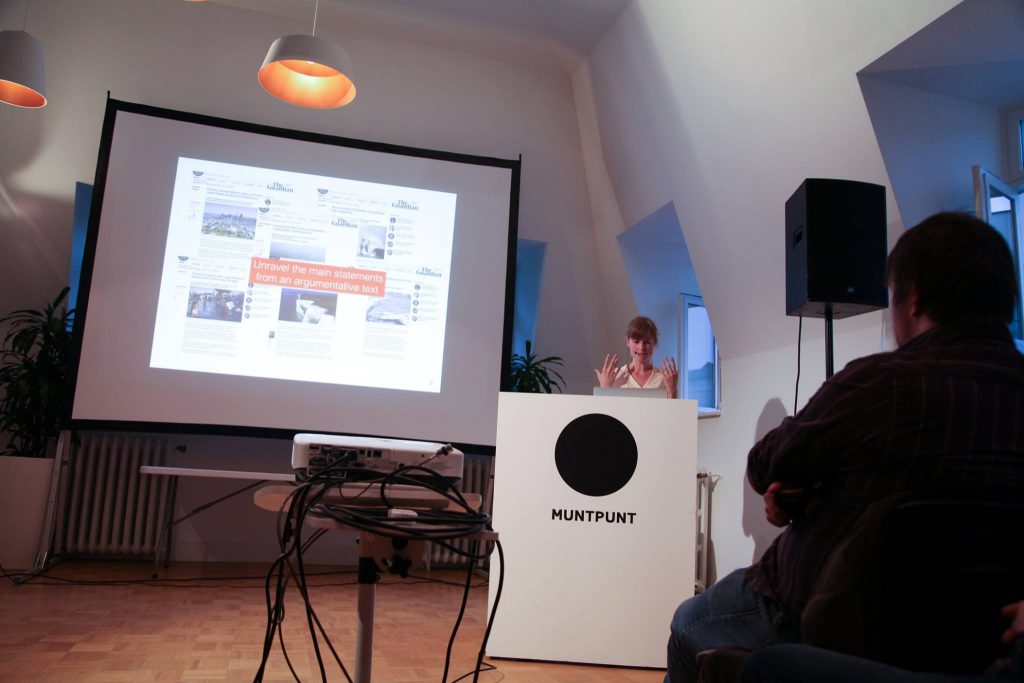The Penelope workbench was presented and piloted today at the EU Commission’s Joint Research Centre (JRC) in Ispra during the third Resonances Summer School, this year devoted to the theme of “Big Data”. The pilot took place in a session on “New tools for social media and fake news”, in which Luc Steels gave a talk and Michael Anslow (Sony CSL Paris) demonstrated the workbench. The Resonances Summer School is an initiative of the Sci-Art project, which is joining art and science to support EU policy making.
Guest lecture at VUB-SMIT
Katrien Beuls gave an invited talk at the VUB centre for Studies in Media, Innovation and Technology (SMIT) where she introduced the ODYCCEUS project. She talked about the goals of the project to create conceptual and social maps from online media and use these maps to make social discourse and social dynamics visible. The semantic frame extractor was also demonstrated, as it was used as an augmented reading tool for a newspaper article about climate change.
First pilot study of the Penelope workbench

The Penelope workbench, which is the first Penelope interface that was released to the public and allows social scientists to build pipelines with available Penelope components, has been piloted at the first ODYCCEUS conference in Leipzig this week. The results of the pilot study show that the participants rated the workbench as useful (8/10) and state that it met their expectations (7.5/10). The workbench can be tested on https://penelope.vub.be/workbench.
Penelope at Databeers Brussels

Katrien Beuls (VUB AI Lab) gave a talk about opinion tracking in online news media at the latest Databeers event in Brussels. She introduced her work on close and distant reading techniques for text analysis and promoted the Penelope platform as an open-source community effort to join scraping, NLP and statistical services in a responsive web application that allows social scientists and media researchers to find patterns in large amounts of text, but also to get a deeper analysis of a selected text, in terms of its argumentation structure and links to external knowledge sources.